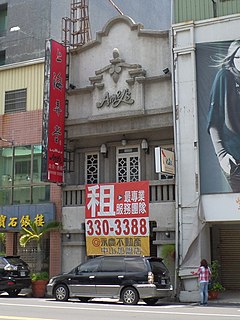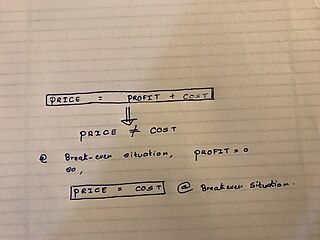This page is based on this
Wikipedia article Text is available under the
CC BY-SA 4.0 license; additional terms may apply.
Images, videos and audio are available under their respective licenses.
The Australian referendum of 12 December 1906 approved an amendment to the Australian constitution related to the terms of office of federal senators. Technically it was a vote on the Constitution Alteration Act, 1906, which after being approved in the referendum received the royal assent on 3 April 1907. The amendment moved the date of the beginning of the term of members of the Senate from 1 January to 1 July so that elections to the federal House of Representatives and the Senate could occur simultaneously.

The 1951 Australian Referendum was held on 22 September 1951 and sought approval for the federal government to ban the Communist Party of Australia. It was not carried.
The 1944 Australian Referendum was held on 19 August 1944. It contained one referendum question.
The 1988 Australian Referendum was held on 3 September, 1988. It contained four referendum questions, none of which passed. The failure was generally attributed to the open ended and nondescriptive wording of the proposed amendments.
Constitution Alteration 1946 proposed to extend the powers of government over a range of social services. The question was put to a referendum in the Australian referendum, 1946 with two other (unrelated) questions. It was carried and inserted s51(xxiiiA) into section 51 of the Australian Constitution.
Constitution Alteration 1910 was an Australian referendum held in the 1911 referendums which sought to alter the Australian Constitution to extend the Commonwealth power in respect of trade and commerce, the control of corporations, labour and employment and combinations and monopolies. All of the proposed changes were contained within the one question.
Constitution Alteration (Monopolies) 1910 was an Australian referendum held in the 1911 referendums which sought to alter the Australian Constitution to give the Commonwealth power to nationalise any corporation deemed by both houses of parliament to be a monopoly.
Constitution Alteration (Corporations) 1912 was an Australian referendum held in the 1913 referendums which sought to alter the Australian Constitution to extend the Commonwealth legislative power in respect to corporations.
Constitution Alteration (Trusts) 1912 was an Australian referendum held in the 1913 referendums which sought to alter the Australian Constitution to give the Commonwealth legislative power in respect to trusts.
Constitution Alteration 1912 was an Australian referendum held in the 1913 referendums which sought to alter the Australian Constitution to give the Commonwealth legislative power over industrial relations in the State railway services.
The question was put to a referendum in the Australian referendum, 1913.
Constitution Alteration 1919 was an Australian referendum held in the 1919 referendums which sought to alter the Australian Constitution to temporarily extend Commonwealth legislative powers with respect to trade and commerce, corporations, industrial matters and trusts. The 1919 referendums was held in conjunction with the 1919 federal election.
Constitution Alteration 1919 was a Referendums in Australia which sought to alter the Australian Constitution to extend the government's power to legislate in respect of monopolies. The question was put to a referendum in the Australian referendum, 1919 held in conjunction with the 1919 federal election.
Constitution Alteration 1926 was an Australian referendum held in the 1926 referendums which sought to alter the Australian Constitution to extend the Commonwealth legislative power in respect to corporations, and to give it the power to make laws with respect to trusts and combinations in restraint of trade, trade unions and employer associations.
Constitution Alteration 1926 was an Australian referendum held in the 1926 referendums which sought to alter the Australian Constitution to give the Commonwealth legislative power to protect the public from any actual or probable interruption of essential services.
Constitution Alteration (Marketing) 1936 was an Australian referendum held in the 1937 referendums which sought to alter the Australian Constitution to remove the restraints imposed on Parliament by section 92 of the Constitution.
Constitution Alteration 1946 was an Australian referendum held in the 1946 referendums which sought to alter the Australian Constitution to give the Commonwealth legislative power over the terms and conditions of industrial employment but not so as to authorise any form of industrial conscription. The question was narrowly rejected.
Constitution Alteration 1946 was an Australian referendum held in the 1946 referendums which sought to alter the Australian Constitution to remove restrictions in Section 92 of the Constitution which limited Commonwealth power to make laws with respect to the organised marketing of primary products.
Constitution Alteration (Prices) 1973 was an Australian referendum held in the 1973 referendums which sought to alter the Australian Constitution to give the Commonwealth legislative power over prices.
Constitution Alteration (Incomes) 1973 was an Australian referendum held in the 1973 referendums which sought to alter the Australian Constitution to give the Commonwealth legislative power over incomes.

The Constitution of the Republic of the Union of Myanmar is the supreme law of Myanmar. Myanmar's first constitution adopted by constituent assembly was enacted for the Union of Burma in 1947. After the 1962 Burmese coup d'état, a second constitution was enacted in 1974. The country has been ruled by military juntas for most of its history.




